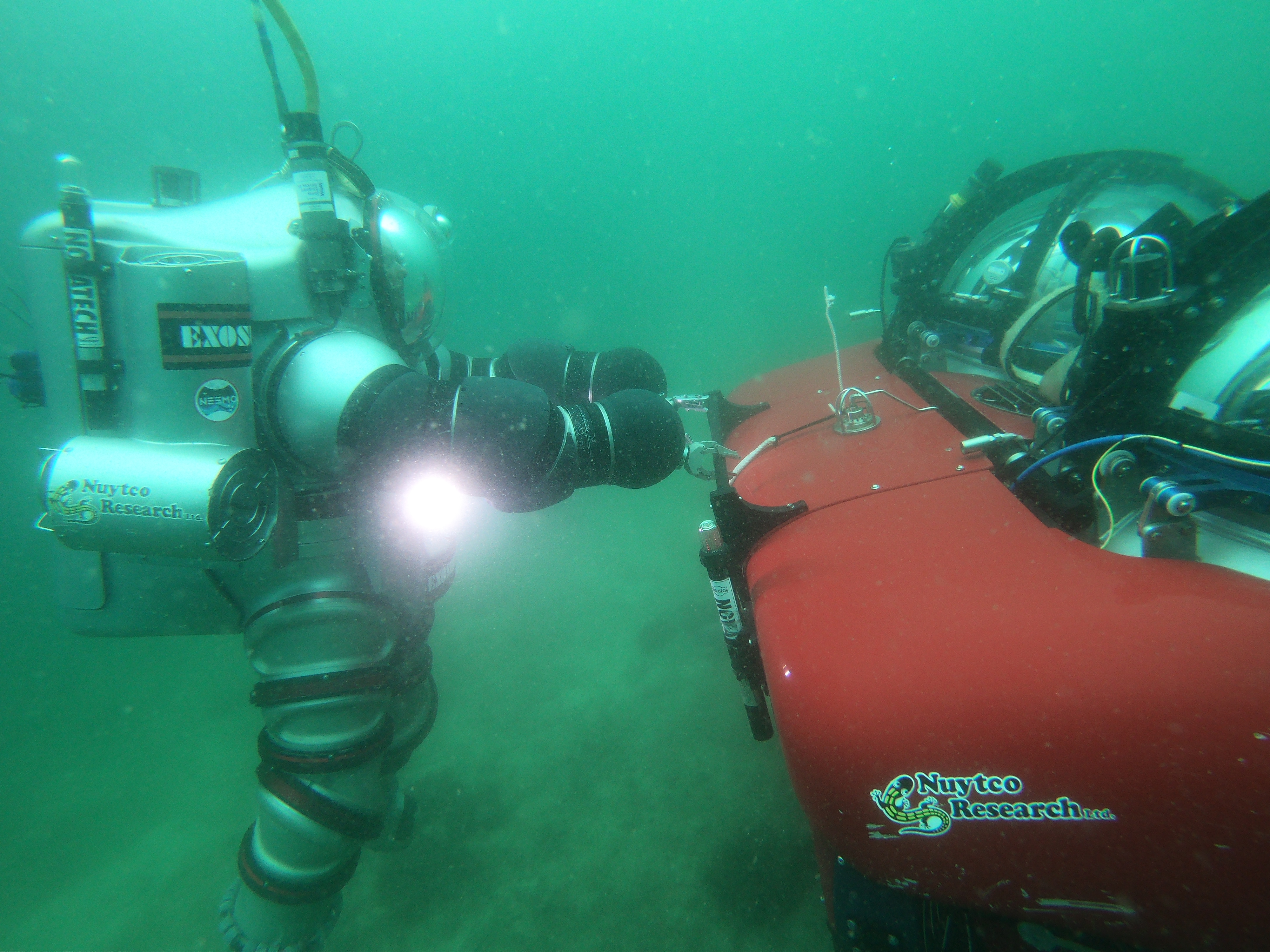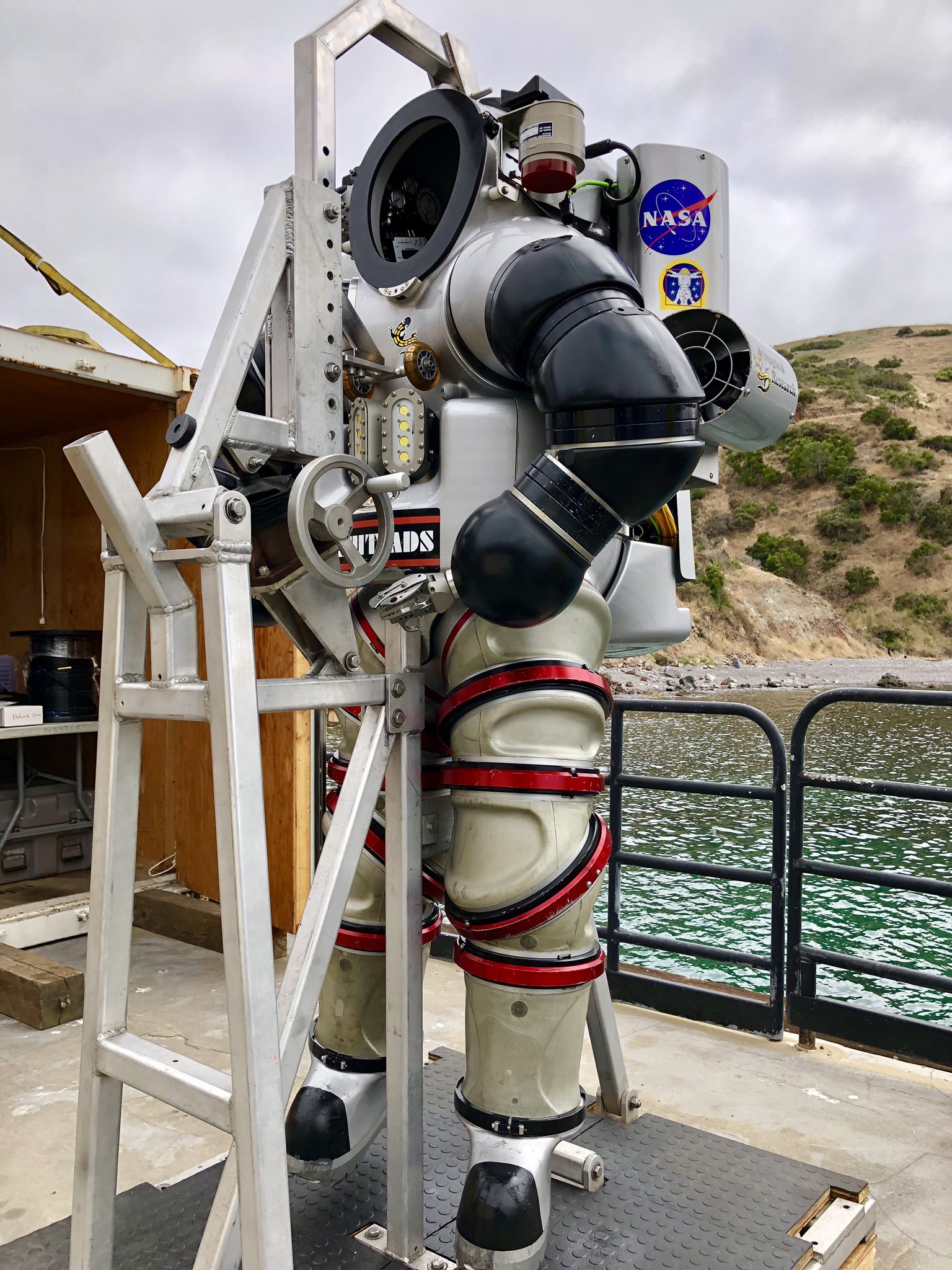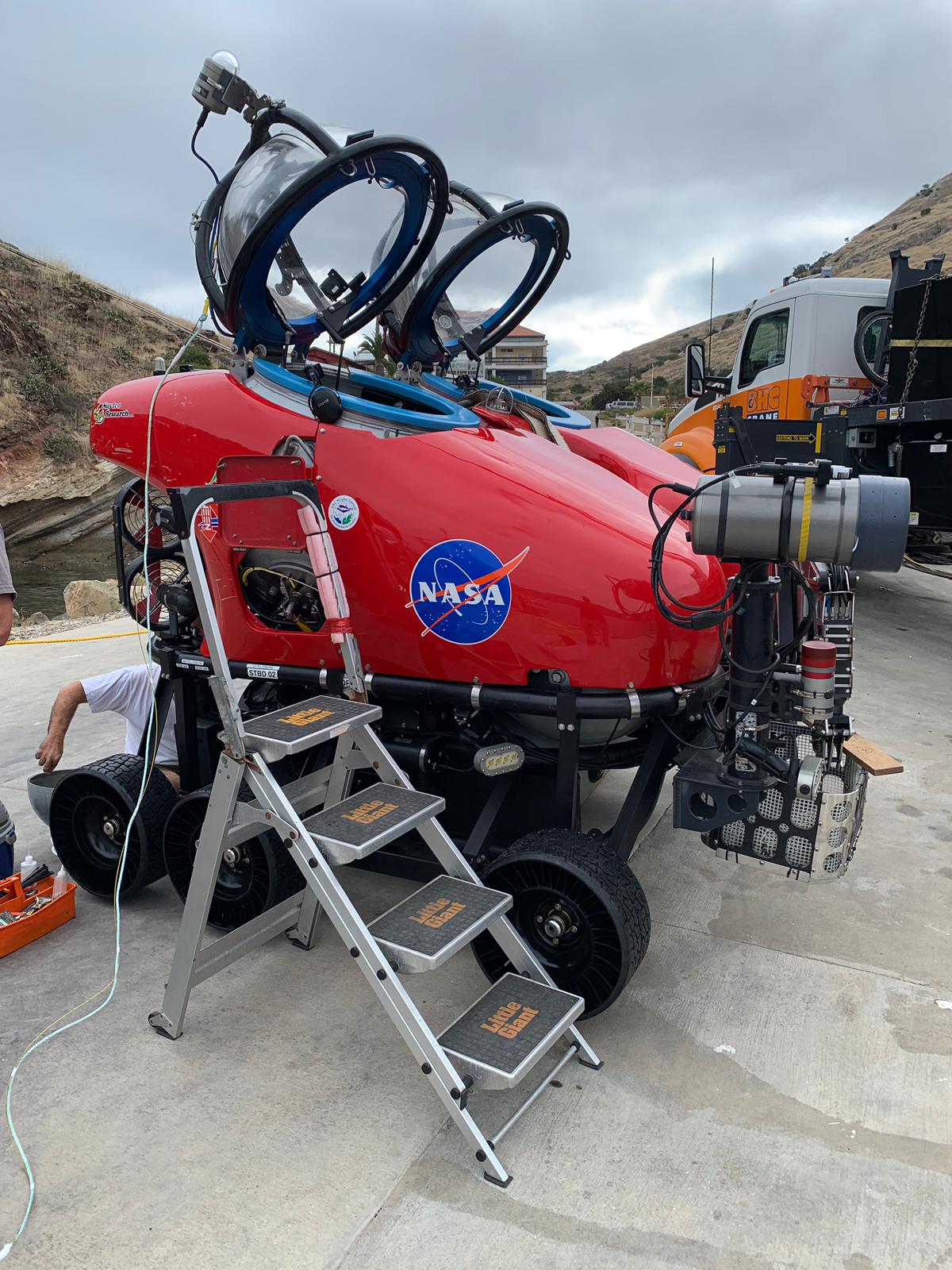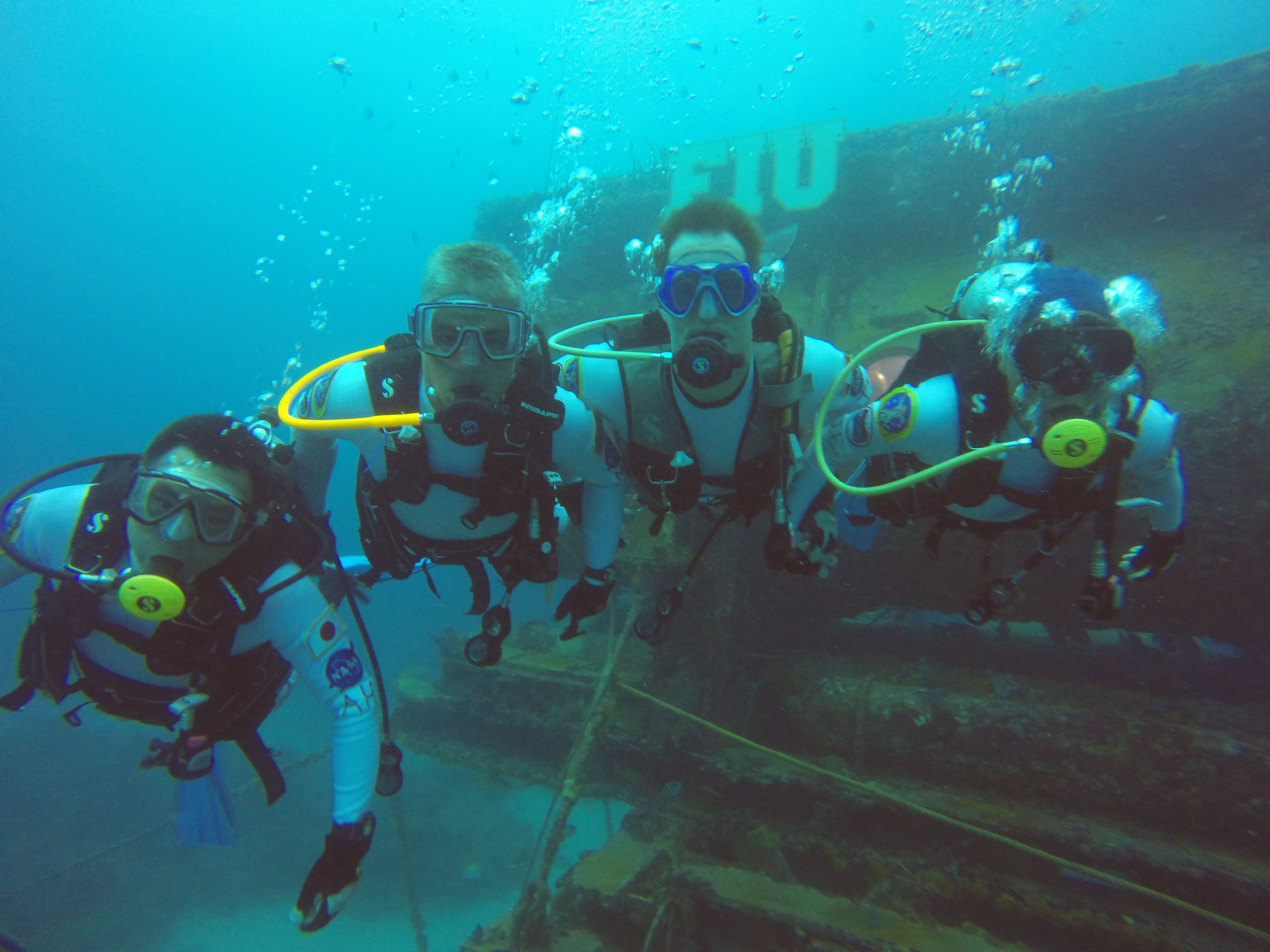Astronauts Test Retro Spacesuit Tech for Mock Mars Missions Under the Sea

Astronauts just resurfaced from a trip to the bottom of the ocean where they tested retro futuristic spacesuit and submarine tech.
From Aug. 21 to 28, 2019, NASA astronaut Drew Feustel, ESA astronaut Thomas Pesquet and Japanese astronaut Norishige Kanai took part in a new NASA Extreme Environment Mission Operations (NEEMO) mission off the coast of California in the U.S. This mission tested the kinds of underwater training methods that might be best to use for training the next astronauts to land on the moon. The mission, hosted by the University of Southern California's Wrigley Institute, is known as NEEMO NXT.
In previous NEEMO missions, "aquanauts" have spent time in the underwater Aquarius base off the coast of Florida. But with this mission, the team resurfaced every day. The mission focused on technology and underwater tests of the commercial ExoSuit, with the help of a team of divers and land-based support.
Related: NASA's Undersea 'Asteroid' Mission NEEMO 16 in Photos

The team tested the suit — which is visually reminiscent of those seen in the early days of science fiction — for its dexterity and potential viability for use in analog missions, or missions that mimic the activities that might take place on places like the moon or Mars. The suit was tested alongside a mini submarine, which simulated a pressurized rover, a vehicle that may accompany astronauts on future crewed missions.

"With these analogue missions everything is made to be as realistic as possible without leaving Earth, so we will be as busy as astronauts on the Space Station, using similar operational techniques with mission control, briefings and procedures," Pesquet said in an ESA statement.

The astronauts also tested the location itself to see if it would be a suitable analog for the environment on the moon. If so, astronauts training to launch to the lunar surface might spend portions of their time underwater working at this site.
Get the Space.com Newsletter
Breaking space news, the latest updates on rocket launches, skywatching events and more!
There are obvious differences between the moon's surface and the Pacific Ocean. However, there are some geological similarities, and the site provides aquanauts with the experience of doing field work in a real-time, high-pressure, difficult environment where things could go wrong unexpectedly, according to the statement.
- Astronaut-Aquanauts: 50 People Have Orbited Earth and Lived Undersea
- Photos: Underwater Astronauts Practice Space Exploration on Ocean Floor
- NASA Names New Moon Landing Program Artemis After Apollo's Sister
Follow Chelsea Gohd on Twitter @chelsea_gohd. Follow us on Twitter @Spacedotcom and on Facebook.
Join our Space Forums to keep talking space on the latest missions, night sky and more! And if you have a news tip, correction or comment, let us know at: community@space.com.

Chelsea “Foxanne” Gohd joined Space.com in 2018 and is now a Senior Writer, writing about everything from climate change to planetary science and human spaceflight in both articles and on-camera in videos. With a degree in Public Health and biological sciences, Chelsea has written and worked for institutions including the American Museum of Natural History, Scientific American, Discover Magazine Blog, Astronomy Magazine and Live Science. When not writing, editing or filming something space-y, Chelsea "Foxanne" Gohd is writing music and performing as Foxanne, even launching a song to space in 2021 with Inspiration4. You can follow her on Twitter @chelsea_gohd and @foxannemusic.









